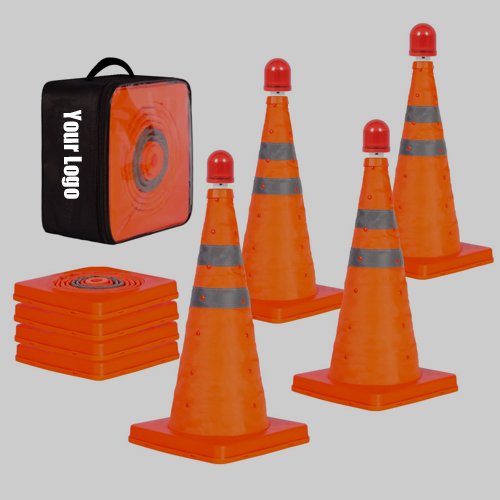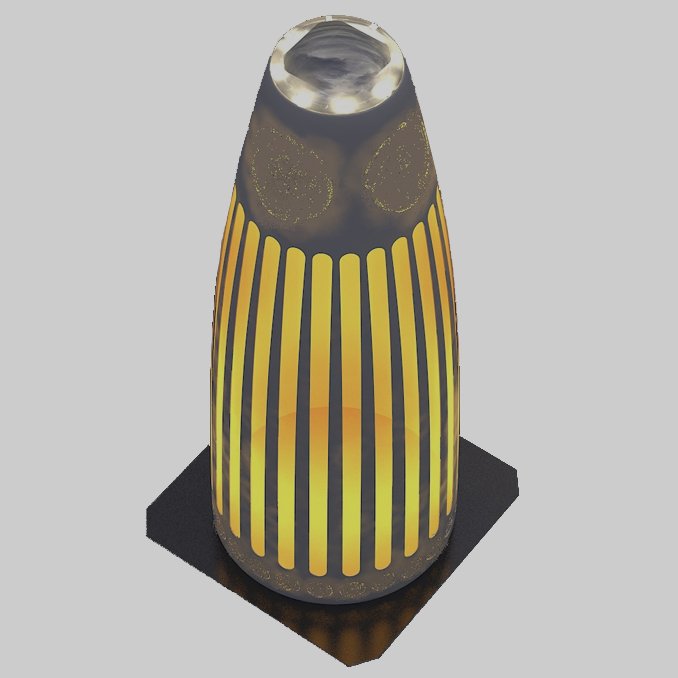When it comes to road safety, bright orange traffic cones are one of the most commonly used safety equipment. Whether it’s a construction site, athletic event, accident scene, or temporarily closed lane, traffic cones are widely placed on roads, sidewalks, and public spaces to guide the public and rivers.
But there’s more to these safety tools than just their color and shape. This guide provides a detailed knowledge about traffic cones, to help road safety professionals and government facilities, to understand what they are, how they’re used, different types available, and how they can choose correct traffic cones for their needs to contribute to a safer environment.
What is a Traffic Cone?
A traffic cone (also known as a safety cone, pylon cones, construction cone), is a bright orange color cone-shaped marker, used to redirect traffic, indicate parking lot collision warning, safety warnings, isolation, and lane separation, in both daylight and low-light conditions.
According to their needs in indoor and outdoor, traffic cones come in different heights and weights, and even different material catering to different needs and purposes. Light-weight traffic cones are made for indoors use, heavier ones are for outdoors use.
What Material Are Traffic Cones Made Of?
Traffic cones are manufactured with durable material, to make them capable of withstand heavy rain, wind, repetitive use, frequents hits, and harsh indoor and outdoor weather conditions. The most common material used in traffic cones making include:
- Polyvinyl Chloride (PVC) Cones
PVC cones are made up after passing through three phases; PVC injection molding, molding and dipping. They are flexible enough that if the vehicle pushes or hits them, they don’t break, instead bend and return to their original shape.
PVC traffic cones are also lightweight, and highly visible, which makes them ideal for portability and use for short-term use cases like events and temporary road construction. These cones are weather and UV resistant, which helps maintain their bright orange color over time.
- Polythene (PE) Cones
PE traffic cones are manufactured by blow molding, and a rubber base is produced with rubber molding, which makes them more strong and durable. These cones are often used at locations where they are highly subject to rough handling and frequent collisions.
- Rubber Cones
Rubber traffic cones are built with recycled rubber, which makes them highly weighted, stable, and durable, helping them withstand in windy areas. These rubber base cones can easily withstand frequent hits and reduce the risk of accidents with their rubber material, making them ideal to use on roads and in construction areas.
Color Coding of Traffic Cones: What Do They Indicate?
- Orange Traffic Cones (Most Common)
Indicate Warning, used at construction sites, hazard zones and temporary road work. The bright orange color grabs driver’s attention, guiding them of caution.
- Red Traffic Cones
Indicate Danger, used at emergency and danger zones like accident spots or fire zones, to restrict access to public interference and alert people to stay away from marked zones.
- Lime Green Traffic Cones
Indicate Safety, primarily used in school zones, pedestrian areas, or for crowd control, to enhance visibility, guide foot traffic, and ensure public safety.
- Blue Safety Cones
Indicate Notice, used to mark restricted zones like utility, airport, or mark handicap accessible areas (in some regions).
- Pink Traffic Cones
Used to draw attention for commercial purposes, mainly placed at temporary events like athlete games and awareness campaigns, with the commercial poster pasted on cones.
- White Traffic Cones
Indicate Safety, used indoors, parking lots, and event spaces, to guide public about areas that are safe to pass for workers and pedestrians.
- Yellow Traffic Cones
Indicate Low-risk Caution, often used for wet floors or warehouse areas, to alert people to be cautious while walking or driving ahead of the road.
- Black Traffic Cones
Black safety cones are used in industrial zones for aesthetic or commercial purposes, and sometimes in hot zones to absorb heat, without showing a danger alert.
- Purple Traffic Cones
Indicate non-potable water zones or hazard waste areas, often used in utility work or warehouses to alert workers and public about specific risks.
Types of Traffic Cone
Traffic cones come in different types and materials, catering to different purposes of road safety and use cases. Here’s the explanation of each type of traffic cone:
- One-piece Orange Traffic Cone
One-piece traffic cones are widely used traffic cone type, made from high-quality PVC and rubber, featuring a bright orange color and white/ silver stripes, to enhance visibility at daytime and guide drivers about any possible danger.

- Two-piece Interlock Black Base Traffic Cone
These types of traffic cones have two parts and colors, top cone-section contains either orange/ pink/ yellow/ blue/ white/ lime green/ purple color, and lower base contains black. This special interlock design between the cone and base makes it more stable, especially in windy conditions and high-traffic areas, by staying stable at their spot without blowing and damaging.

- Collapsible (Pop-Up) Traffic Cone
Collapsible traffic cones (also known as foldable traffic cones), are designed for easy storage, portability and carry, for short-term uses like temporary events and emergency roadside assistance for police or trucks.

At JACKWIN, we provide collapsible traffic cones with flashlight embed over cone, that help increase visibility at nighttime without need of an external power source.
- Solar Traffic Cone Light
Solar traffic cones are equipped with LEDs that get powered during daytime, and lit up during nighttime. These traffic cones are weather-resistant, mainly designed for use in hotels, yards, nighttime road construction, to enhance visibility during low-light conditions.

Applications of Road Cones
- Working Zone
Safety (white) traffic cones are widely used in public areas to mark working zone or specific area for workers, to restrict public or pedestrian from passing through that zone, to ensure both public and workers safety.
- Road Construction Sites
At construction sites, construction cones are placed at the center of road to block off dangerous zones, and guide drivers to bypass through dangerous zones. This helps avoid confusion and keeps workers, facilities and drivers safe.
- Traffic Management
Traffic cones are mostly used by traffic police and play a major role in temporary traffic control. When there’s an accident or chance of lane collision, cones are installed, to redirect traffic, keeping traffic flow smooth and organized.
- Pedestrian Walkways
In busy areas or sidewalks under-going repair, cones are widely used, to guide pedestrians with a message or symbol marked on traffic cone. They guide foot traffic and protect people from stepping into unsafe zones.
- Accidents & Emergencies Sites
It is very common practice to use red or orange traffic cones at accidents or emergencies sites, to alert public and driver, guiding them to be cautious while passing.
- Hospital, School, and Bank Zones
Traffic cones are widely used at entrances of hospitals, schools, and ban zones to restrict vehicles from passing by near entrance, protecting students, patients, or facilities.
- Event Management
For events like marathons, parking control, or public gatherings, traffic cones are used, to mark entry/exit paths, separate lanes, and organize crowd movement easily.
- Obstacle Games
Cones are also used in fun activities like obstacle races or training drills. They set boundaries, create challenges, to guide participants throughout the game or activity.
How to Choose Traffic Cones For Your Needs?
The correct choice of traffic cones selection depends on the specific situation and scenario. Traffic cones come in various types built with different durable materials, so you may need to make correct traffic cones selection based on your situation, required cone materials, and weights.
For road safety or construction, you can go for bright orange cones with reflective collars. If it’s for schools or events, lime green or pink cones work best. Indoors or for parking lots, smaller cones in yellow or white are enough. Always consider the cone’s height, weight, and visibility based on the environment. Make sure it’s durable, easy to spot, weather-resistant and fits your specific use case.
To Wrap Up:
Traffic cones may look simple but plays a vital role in public and driver safety on road, public events and worksites. For road safety professional professionals or government authorities controlling dangerous zone, worksite, events, it’s crucial to invest in high-quality traffic cones and choose correct sizes, color, and weight that cater to their situation needs. If you’re planning to buy high-quality traffic cones, contact JACKWIN today to explore a wide range of cost-effective traffic cones, made with durable materials that withstand every weather condition. On companies request, we also manufactured personalized traffic cones at a wholesale rate.


-80x69.png)

